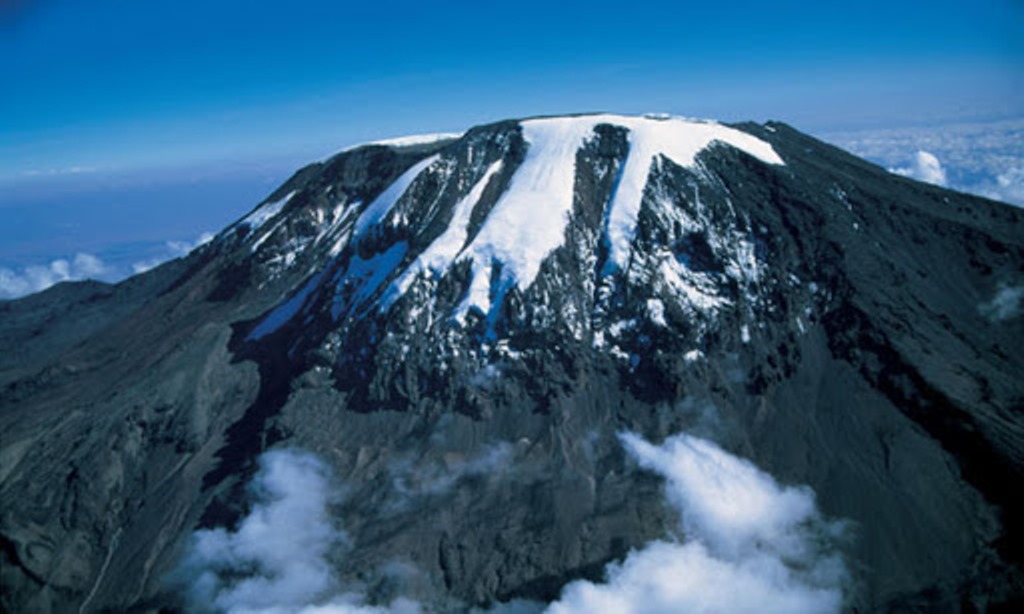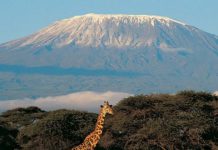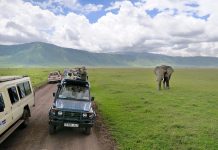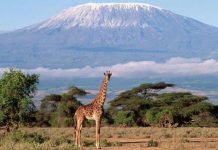Author: DEUS NGOWI
AfricaPress-Tanzania: MOUNT Kilimanjaro, Africa’s rooftop, has once again emerged as a special attraction in China and Asia.
It is in Guyang in China where Tanzania’s tour operator, Zara Tours, scooped the Best Mountain Tourism Award in the 2020 International Mountain Tourism Alliance (IMTA).
Zara Tours won the award following its presentation of Kilimanjaro Marangu Hiking Route on Wednesday at the IMTA.
Chinese television stations will on Thursday (November 19,2020) run special 15-minute programmes highlighting Mt Kilimanjaro and the Marangu Trekking Route.
Tanzania’s Ambassador to China Mr Mbelwa Kairuki said on Wednesday that the conference, consequent award and the special programmes to be aired are worthy opportunities to educate Chinese and other people in the region of the fact that Mt Kilimanjaro is in Tanzania and not otherwise.
They will instill in their minds and of those in the Far East and other viewers– would-be tourists — of where they could make expeditions in the country given that the Covid-19 pandemic has been completely controlled.
The awards aim to convey the social responsibility and values that practitioners of the mountain tourism sector ought to shoulder while sticking to the concept of innovation, green, ecology and sustainable development.
With the awards as an opportunity, IMTA strives to integrate the current industry resources and products to facilitate tourism investment and consumption upgrade based on capital and technology improvement, and to set a benchmark to lead the overall progress of the mountain tourism industry.
2020 IMTA Mountain Tourism Awards are divided into two categories – Grand award and Special awards.
While Grand award is Mountain Tourism Sustainable Development Award, Special awards are the Best Mountain Tourism Destination Award, Best Mountain Tourism Outdoor Sport Award, Best Mountain Tourism Campaign Award and Best Mountain Tourism Hiking Route Award.
According to IMTA, a highly authoritative expert jury for the awards was established with experts from China, Germany, Korea, France, Switzerland, the United States, and other countries in the fields of tourism planning, ecological environment, art and culture as well as outdoor sport.
To demonstrate the awards’ authoritativeness and objectiveness, experts from International Organisation of Folk Art (IOV), World Tourism Cities Federation (WTCF), Asian Ecotourism Network, China Tourism Leisure Association, International Inbound Travel Association (IITA), The Explorers Club and others were invited to join the jury.
In his message to the world, Ambassador Kairuki noted that Tanzania is a peaceful and stable country and a home to the world-renowned tourism destinations, including Mt Kilimanjaro, exotic Zanzibar islands and more than 16 wildlife-rich national parks including Serengeti, the Ngorongoro Crater, Selous and many others.
Crowned by the Mt Kilimanjaro, Kilimanjaro National Park is one of the world’s popular parks.
In 1987, UNESCO declared Mt Kilimanjaro a World Heritage Site due to its uniqueness.
As the highest single free-standing mountain in the world at 5,895 metres, it rises abruptly from the open plains, capped by snow and frequently fringed by clouds.
The mountain is one of Africa’s classic images, and as a dormant but not extinct volcano.
Apart from a mountain, the park offers other attractions and there are some rare and endemic species of flora and fauna.
An estimated 2,500 species of plants and 140 mammal species have been recorded.
Major tourism activity in the park is mountain climbing in which tourists climb the mountain by using routes available.
Any reasonably fit person can conquer Mt Kilimanjaro taking normally five to six days.
There are several routes including Marangu, the easiest to climb and therefore the more popular; Machame, Shira, Umbwe and Rongai are other routes.
Tanzania and China enjoy strong bilateral relations that was laid down by the founding fathers of the two nations, Mwalimu Julius Nyerere and Abeid Amani Karume on Tanzanian side and Chairman Mao Zedong and Premier Zhou Enlai on the Chinese side.
Both leaders had common ideologies and visions in building a foundation for economic development of the two countries.
For decades, Tanzanians and Chinese have worked together to strengthen their friendship and partnership from individuals to governments.
China’s 2020 population is estimated at 1,439,323,776 people at midyear, according to United Nations data.
That figure is equivalent to 18.47 per cent of the total world population. Its huge population offers large room for many tourists to visit Tanzania.
Themed ‘On Sustainable Development of Mountain Tourism Led by Innovation, Green and Ecology’, the 2020 IMTA Mountain Tourism Awards aim to prize concepts and methods of mountain tourism in the post-Covid-19 world.
“To that end, International Mountain Tourism Alliance (IMTA) integrates the intelligence and competence of IMTA members and other organisations, pools mountain tourism related resources and products, in a bid to boost tourism investment and consumption upgrading, lead the progress and facilitate the revitalisation of the mountain tourism sector,” an IMTA statement said.
Under the guidance of the Expert Jury, IMTA solicits candidate projects from IMTA members, tourism public companies and destination management agencies. The management of IMTA and the participation of professional media contribute to high-quality mountain tourism projects.
“We also form an international project solicitation team to pool resources and attention, to set an example for the mountain tourism industry and regain the confidence to revitalise the industry in the post-Covid world.
The First International Mountain Tourism Conference held in Xingyi of Guizhou province of China stressed on friendly mountain eco-system for sustainable development of the economy, society and environment in mountainous countries and regions around the world in October 2015.
The IMTA encompasses 126 groups and individuals from 29 countries and regions of all five continents, including 60 overseas institutions and 57 institutions of China.






